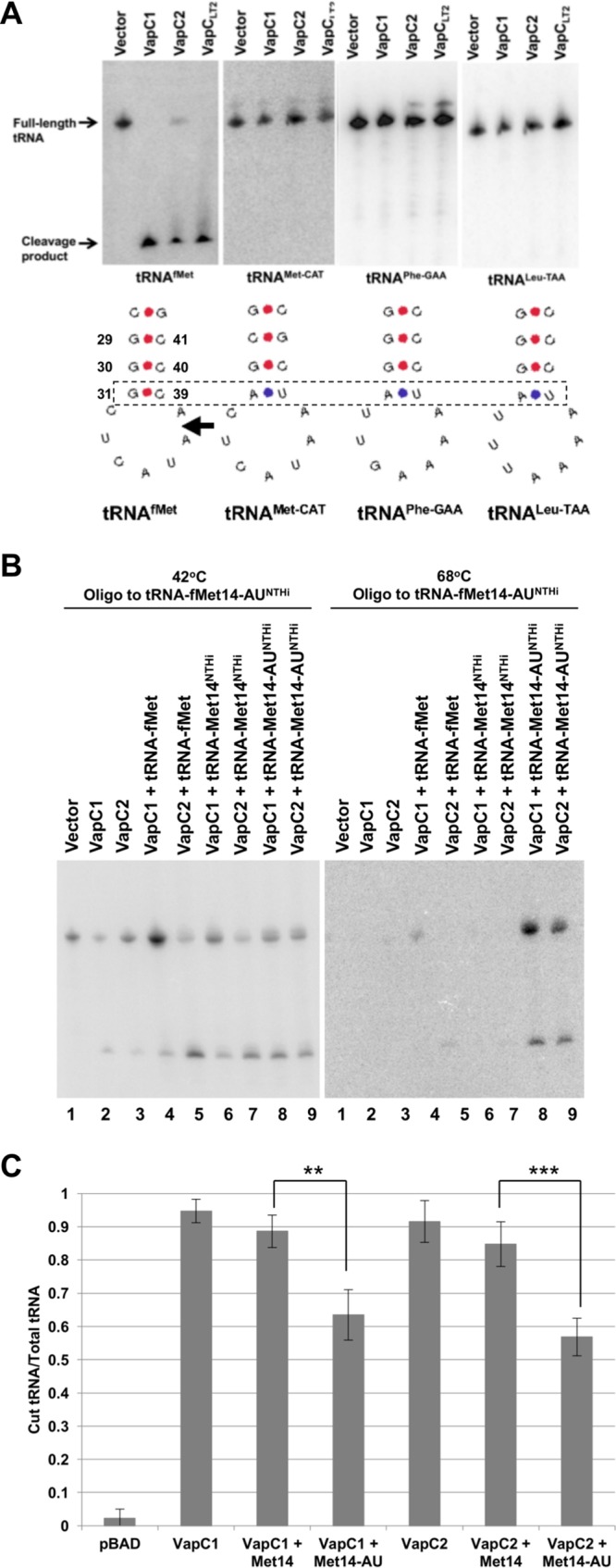FIG 6.

Efficient cleavage of tRNAfMet by VapC1NTHi and VapC2NTHi requires a key base pair in the anticodon stem structure. (A) Diagram showing anticodon stem-loop sequences and structures for various tRNAs. Above each structure is a Northern blot of total RNA from E. coli carrying pBAD, pBAD-VapC1, or pBAD-VapC2 (induced with 0.2% l-arabinose), probed for each tRNA. The box denotes the base pairs of interest that differ between tRNAs that are cleaved and those that are not. The arrow indicates the site of cleavage in tRNAfMet. (B) Differential hybridization Northern blot analysis of total RNAs isolated from E. coli BL21(DE3) cells expressing VapC toxins (induced with 0.01% l-arabinose) and tRNAs (induced with 0.5 mM IPTG) as indicated, performed as described in Materials and Methods. The blots were hybridized with an oligonucleotide specific to both E. coli tRNAfMet and NTHi tRNA14-AUfMet, but with one nucleotide mismatch for the E. coli tRNAfMet. After hybridization of the probe, blots were washed at 42°C and then again at 68°C, as indicated above each panel. (C) Quantification of cleaved tRNA/total tRNA from Northern blots, measured using ImageQuant. Quantification of the histogram bar representing VapC1 + Met14 was carried out by probing the Northern blots from panel B with a probe specific to tRNAfMet14 (not shown). The data are averages for four biological replicates, and error bars represent standard deviations. **, P < 0.01; ***, P < 0.001.
